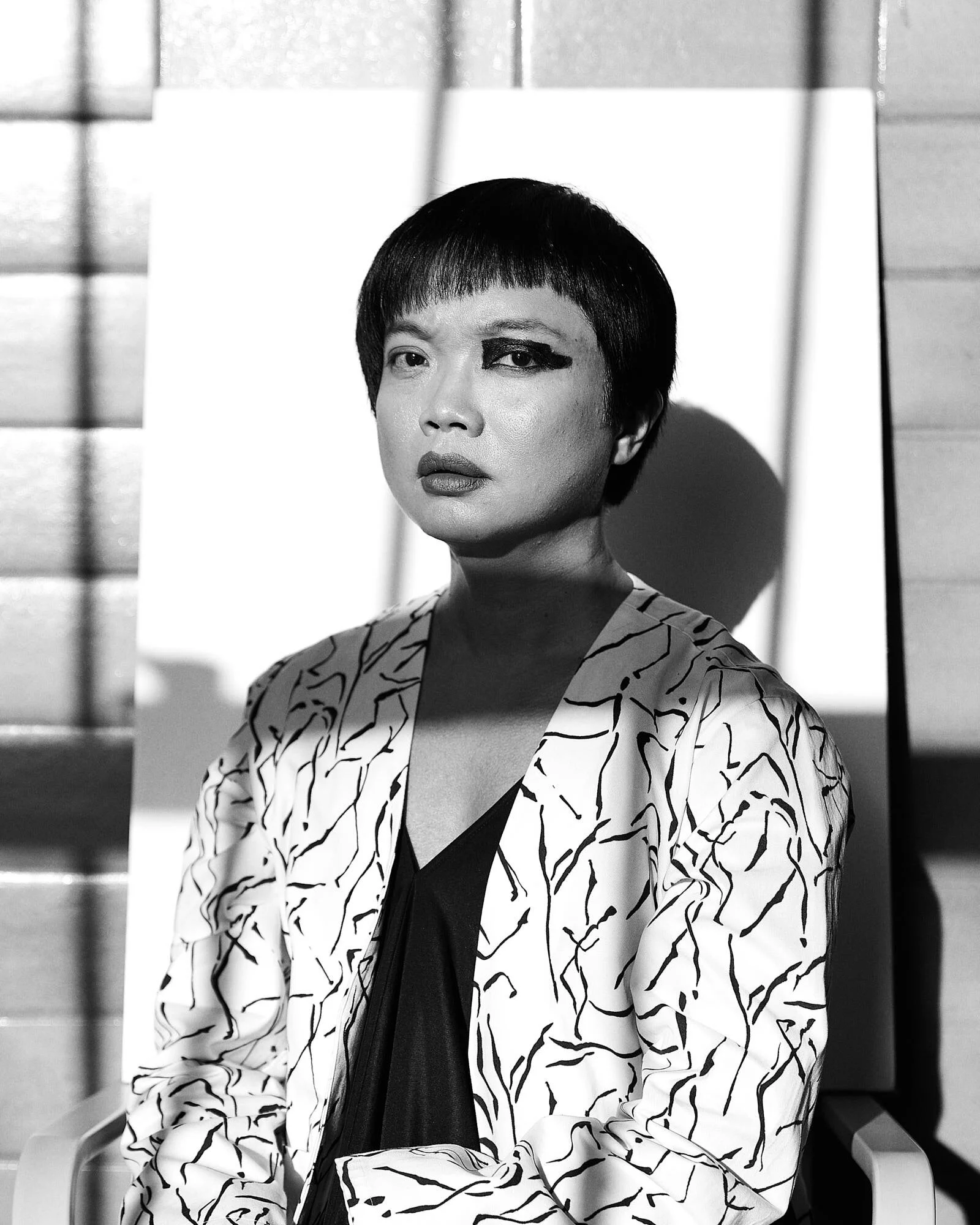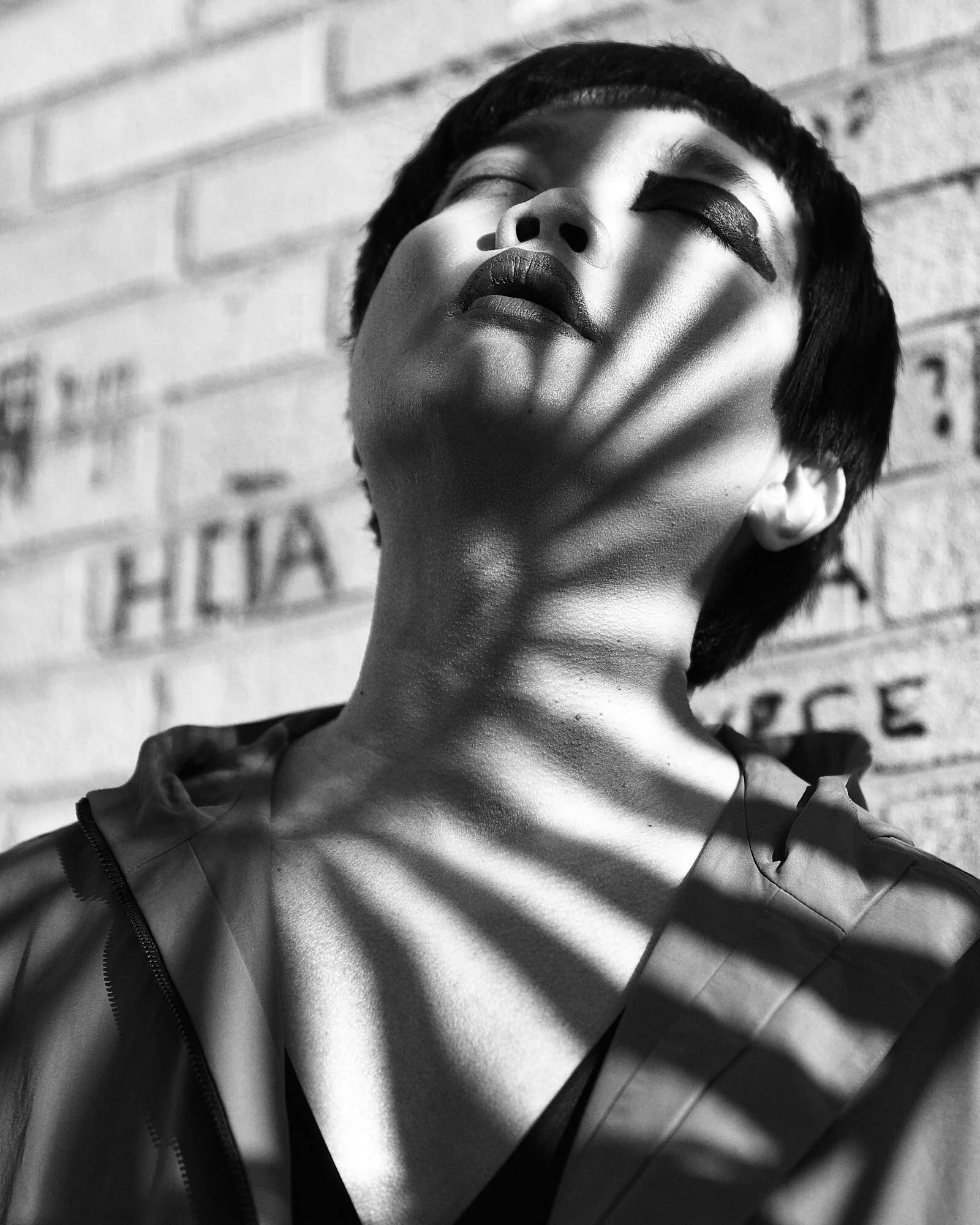Victorious | Interview with Victor Loo
9 min. Read | Interview | A.M.
Interview with Victor Loo
STYLED BY Angeline Oei
MAKEUP BY Sharon Yoon
WARDROBE BY A.Oei Studio THROUGHOUT
PHOTOGRAPHY BY A.M.
ORIGINALLY PUBLISHED IN THE APRIL ISSUE, 2020.
Victor Loo has cultivated a precise image throughout a career as a commercial and editorial fashion model. And it’s that precision that allowed Victor to achieve so much so quickly. With fashion as both a career aspiration and a personal expression, it became quite natural to develop a brand identity around a pre-existing passion. Yet unknown to those outside of a close-knit circle of friends, Victor’s true passion became helping others. And a career path that began with apparel and accessories quickly evolved into a leadership position in the healthcare sector.
Victor began life in Singapore under the British Colonial System in a self-described strict, disciplined, family. And much of the rigid structure that framed Singaporean life was etched into Victor’s personality.
“Singapore is a city of gardens. Everywhere you go, you will see the beautiful landscape. Some people criticize Singapore, saying it’s very strict. But when you go there, you’ll see it’s really a very beautiful metropolitan city, partly because of its structure. They think, how can a city that looks like New York be so rigid? But I learned early of the compromise to give up something to maintain that safety and cleanliness in the city. Some people do not like that kind of structure and discipline. It is a very highly competitive society. And I don’t know how much of my personality was from the city and how much was from within me personally. But I know it helped me greatly, both in my modeling and in my other career.”
Victor’s modeling career began as many do. And armed with charisma, intrigue, and a dash of boredom, a pathway into fashion was born.
“Despite growing up in Singapore, I never really fit in. I already knew I was different growing up, and would say that I wasn’t a very good student. My grades were above average, but I didn’t make an intentional effort to be more successful. And at a very young age, people would always mistake me for female, but it never bothered me. And so almost by accident, I got into modeling.”
“Imagine me as a teenager—I was very petite. And I actually got scouted, of all places, in a shopping mall. I met with a woman called Bridget from Carrie Models—we’re still friends to this day. And it wasn’t clear to me then if it was a scam or anything, but it happened to be during summer vacation when I had nothing else to do, and the rest was history. It was all pretty exciting.”
“The turning point for me came when I was modeling in Bangkok, Thailand. I decided at that time, in order to have a marketing strategy that can help me make a very positive branding image, I needed something different to stand out from among all these beautiful people. So it became helpful to use modeling to expose my volunteer work in Bangkok. And that’s when I began my involvement in social services.”
After making headway as commercial model, Victor saw passion and opportunity in a branching career path, and finally made the decision to pursue higher education in the United States.
“A U.S. college degree, even to this day, carries more weight than a degree from other countries. So I recognized that, to be strategic, I needed to move to a country that has a college degree that’s more recognized. And I first picked San Diego because of the weather. Of course I had never been there, so I was in for a lot of surprises when I arrived. And despite the slow pace, I do like San Diego. But after three or four weeks, it was the same routine. And I hate driving. And you cannot easily navigate public transportation. So I began to explore where else I could go.”
“The main reason I picked Seattle—and this sounds really silly—but I absolutely love the movie Sleepless In Seattle that portrayed this image of a city where you can go to find love, and it’s romantic! And of course it was one of the most rainy places. But very quickly I was able to make friends and that was what enabled me to bond.”
Victor’s sense of style was quickly embraced by Seattle’s fashion community. And soon after, Victor developed an eye for upcoming talent.
“I think I was one of the first few people to know him once he moved to Seattle. I think at that time, we could immediately see that we both love fashion. I think it’s pretty obvious! But when I first saw his designs, I could tell that this was someone who is very unique with a very artistic eye and a story to tell, a vision. I followed him on social media and saw that he was a self-taught watercolor artist that ventured into self-taught fashion design. And he had a collection he really wanted to show, so we held the model casting in the loft I used to live in. The venue fell through, and I told him I might be able to find another space. We finally found a club, and the space was perfect. And that’s how it all started.”
That newly-arrived, self-taught fashion designer was Devon Yan, now Creative Director of his eponymous Seattle-based label, Devonation. Victor and Devon have maintained their friendship and can be seen supporting each other’s careers both on and off the runway. And while this may be the first in a series of fashion-friendships, each strategically connected to the global fashion industry, Victor will be the first to confess the wonderful serendipity of every introduction, as well as rules of engagement that create healthy boundaries and deepen bonds that last a lifetime.
“I think the mistake that people make in any industry, and especially in the fashion industry, is that people view interactions as transactional—If I do this for you, then I will get that as a return. And I don’t want to treat anyone like that. We shouldn’t treat any human relationship or interaction as transactional. If you do, then very quickly it will fall apart. And I’m the kind of person that will share connections and resources because, ultimately, it benefits everyone. There’s so much more opportunity to go around. And from what I can see, this free-flowing direction I have with people has benefitted me, and also different people I know, and it really applies cross-industry, not just in fashion.”
One of the relationships Victor is most proud of is the one nurtured internally. Confusion over gender, while not commonplace, occurred often enough to cause self-reflection. And with a typically gentle and subtly subversive sense of humor, Victor took to the topic of self-identification with stride.
“Being gay in Singapore was still illegal, which is one of the reasons I left. But as a teenage boy, and a model, I didn’t really think of it that way. Modeling was just a fun thing to do while on vacations from school. But I began to develop more interest in the arts, and became androgynous by accident. I returned to modeling after I became a social worker, and people kept mistaking me for female. They kept asking me, what is my name? So I thought, as a joke, I would call myself Victoria/Victor because of the movie—I just reversed the title as a play on words. And the truth is, I couldn’t pronounce the word androgynous, so I began to refer to myself as genderless. And that’s how I became a genderless model.”
“Very quickly I realized that when I model, when I’m on an editorial photoshoot or on the runway, I’m no longer Victor-Loo-the-social-worker. I’m actually Victoria. At the same time, I’m not female. But in modeling, essentially, the team is telling a story that we want to convey to those watching or reading. There’s an artistic expression, which is why, when I go to a casting or a shoot, I always want to know what the vision is so that I can play that character, to express it. And I’m very fortunate to have another platform, another way, to express myself.”
“I think the mistake that people make in any industry, and especially in the fashion industry, is that people view interactions as transactional.”
Victor’s journey through self-discovery and commitment to generosity have served many others outside of the fashion world. Victor is now the Director of Practice Innovation at Asian Counseling and Referral Service (ACRS) which is a non-profit that provides a wide range of behavioral health and social services to people in King County. In addition, Victor has been a member of a number of boards, and most recently, has been invited to serve on the Seattle LGBTQ Commission.
“People will ask me, whether it’s modeling or the social work that I do now, how did I get to where I am? And I always tell them it’s through a lot of hard work. But beyond that, I’m a very ambitious person. If you want to be successful and move into a higher position, you must be very intentional and very strategic.”
“At ACRS, the agency created my current position about a year ago. Essentially, we are positioning ourselves to be thinking more about Integrated Managed Care, which exists to integrate primary care with behavioral healthcare, and includes mental healthcare and substance use disorder services. Sometimes people still use the word addiction. In our industry, we try to stay away from it because it has a stigma attached to it. But as a nation, the country is really moving toward IMC. So if a patient wants to receive mental health counseling or substance use disorder counseling, they can access it in a primary care setting at a hospital, at Kaiser, at Swedish. And vice-versa. And if an immigrant or a member of the LBGTQ community feels more comfortable receiving primary care services without going to a hospital, they can receive it at a community-based behavioral health organization that has the ability to provide primary care.”
The ever-changing landscape of the United States healthcare system requires constant updates and adherence to new and often difficult to implement policies. For those who do not work in healthcare, it’s difficult to grasp how radical this shift can be. And for those working in the non-profit sector, the shift can be truly devastating.
“Often times I’m sought out as a consultant and I’m very selective about what I want to do. Sometimes I will do this for free, if they are a non-profit organization that’s small, if they are in need of strategic planning, and if I think their mission is something that makes sense to me. Some non-profits are so small they cannot even hire their own custodian. And there’s a big difference between those that have one million and those that have eighty-five million. Sometimes I help build a business model, and other times it’s developing an implementation plan. And for the companies I charge, I often tell them they need to think long-term because the return on their investment is likely to come back three-fold or more.”
In the end, what began as a love for fashion and the thrill of executing creative visions evolved into a thriving career helping people strategically navigate new and difficult changes on an individual, departmental, organizational, and even a county level. Whether you’ve known Victor or Victoria, you have come to know someone of incredible ambition and insight that chooses to use their powers for good. A journey of discovery became a mission of service, with some strategic planning, and a generous spirit.
“If you want to be successful and move into a higher position, you must be very intentional and very strategic.”









